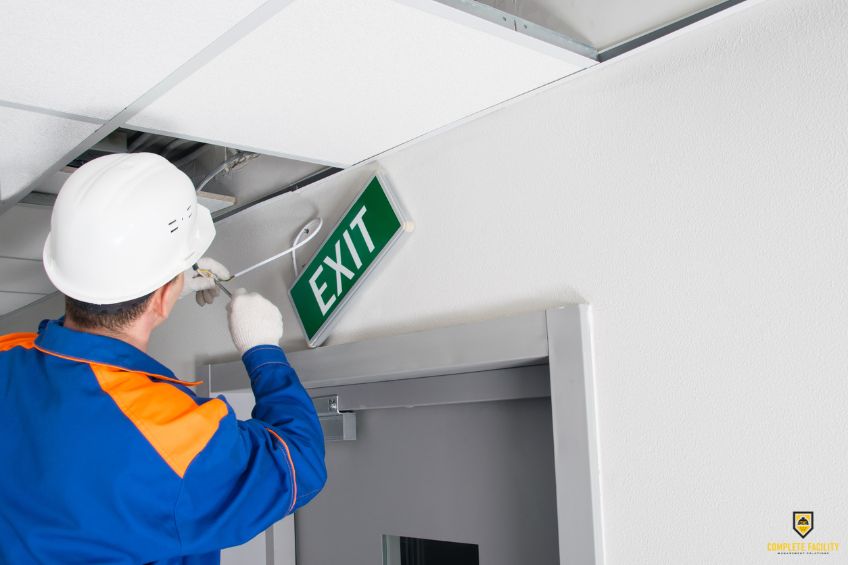
Compliance isn’t just about paperwork. For Utah’s industrial and commercial facilities, it often comes down to what’s hardwired into the building itself. Safety infrastructure—things like fire suppression systems, emergency signage, exit lighting, and ADA-accessible features—plays a central role in determining whether a facility passes or fails inspections.
From food processing plants to manufacturing facilities, regulatory inspections are more frequent and comprehensive than ever. The Occupational Safety and Health Administration (OSHA) and Utah’s own Occupational Safety and Health Division (UOSH) enforce clear standards that govern facility conditions, many of which fall under the banner of building safety systems. If those systems aren’t maintained or up to code, citations, fines, or operational shutdowns can follow.
According to OSHA’s Top 10 Most Frequently Cited Standards, some of the most common safety violations include blocked or unmarked exits, non-functioning emergency lighting, and fire extinguishers that haven't been serviced. These are not large infrastructure issues—they’re details that facility teams are expected to maintain on an ongoing basis. But when safety systems are forgotten or deprioritized, the result is often a failed inspection or worse, a real-world hazard.
In Utah’s high-compliance industries, especially food processing and manufacturing, safety protocols are embedded into how facilities are built and maintained. Adhering to life safety, accessibility, and workplace standards isn’t just good practice—it’s a requirement for smooth operation and inspection readiness.
Regulatory inspectors don’t just want to see a checklist; they want to see evidence that a facility is actively managing its safety environment. That includes properly mounted and tested fire extinguishers, accessible egress pathways, legible safety signage, functioning alarms, and records of recent safety system checks.
Inspectors also often look at whether routine checks are documented, how fast repair issues are addressed, and whether safety infrastructure integrates with emergency response plans. Facilities that treat these systems as “set it and forget it” often find themselves scrambling during inspections, while those that partner with facility service providers tend to remain in a constant state of readiness.
A facility safety strategy isn’t just for compliance—it protects people. In manufacturing or industrial environments, even a single non-functioning system can escalate a minor incident into a major emergency. Fire suppression, emergency lighting, and exit clarity can all mean the difference between a contained problem and a shutdown or injury.
According to the National Safety Council, workplace injuries cost U.S. employers more than $170 billion annually. Many of these incidents are tied to facility-related factors that could have been prevented through attention to safety infrastructure and inspection readiness.
Complete Facility Management Solutions helps Utah-based facilities stay ahead of inspection requirements by managing the very systems that make up safety infrastructure. From routine checks to signage upgrades and code compliance repairs, their team ensures that the details don’t get overlooked. Whether preparing for a scheduled audit or responding to a safety advisory, CFMS supports a strategy that keeps facilities compliant, prepared, and above all, safe.